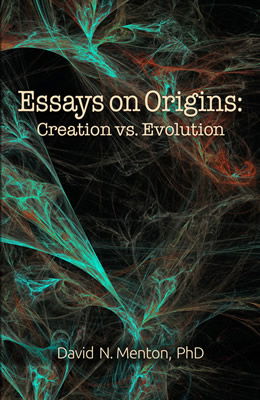
Methuselah and Grandpa’s Ax: the Problem of Aging and Death
Editor’s Note: First published in St. Louis MetroVoice 5, no. 9 (September 1995).
Many people find it difficult to believe that Methuselah lived to be 969 years old. Nevertheless, the Bible states quite plainly that the early patriarchs and their wives often lived to be nearly 1,000 years old, and had children when they were several hundred years old! Similar claims of long life spans are found in the secular literature of several ancient cultures (including the Babylonians, Greeks, Romans, Indians and Chinese). Even a life span of nearly 1,000 years is sadly abbreviated, however, when we consider that God initially created us to live forever. Let’s take a look at the whole matter of aging and death from the perspective of both the Bible and science.
The Bible tells us that God created the first humans—Adam and Eve—without sin and with the ability to live forever. God gave the first human couple virtually everything they needed for their eternal health and happiness in the Garden of Eden; but He warned them not to eat fruit from the Tree of the Knowledge of Good and Evil or they would die, as would all humans after them (Genesis 2:16–17). When Satan’s deception caused first Eve and then Adam to disobey and eat from the forbidden tree, their minds and bodies suddenly became profoundly changed. Not only did they become subject to death, but their firstborn child (Cain) became the world’s first murderer. Truly, the wages of sin is death, physically and spiritually. It is sobering to think that the Bible would have been only three pages long—from Creation to the fall into sin—were it not for the undeserved love of God who both promised and sent the Messiah to save us from sin and death (Isaiah 25:8; Psalm 49:14–15; 1 John 5:13).
For the first 1,500 years after Creation, men lived such long lives that most were either contemporaries of the first man, Adam, or personally knew someone who was! The ten patriarchs (excluding Enoch) who preceded the Great Flood lived an average of 912 years. Lamech died the youngest at the age of 777, and Methuselah lived to be the oldest at 969. During the 1,000 years following the Flood, however, the Bible records a progressive decline in the lifespan of the patriarchs, from Noah (who lived to be 950 years old) until the time of Moses (who died at an age of 120). In fact, Moses was unusually old for his time because, when he reflected on the brevity of life in Psalm 90, he said: “As for the days of our life, they contain seventy years, or if due to strength eighty years” (Verse 10). Today, man’s maximum life span is about 120 years, and our average life expectancy is still only 70–80 years—just as it was when the 90th Psalm was written 3,400 years ago!
What exactly causes this process of aging in our body?
What exactly causes this process of aging in our body? Although the mechanism of aging (and its prevention) has long been an object of biomedical research, science still has no definitive answer to this question. Around the turn of the century it was believed that aging didn’t directly involve the living cells of our body, but rather was an extracellular phenomenon. It was believed that our normal living cells, if properly nourished, could grow and divide indefinitely outside our body. In 1961, this idea was refuted by Leonard Hayflick who grew human cells outside the body in covered glass dishes containing the necessary nutrients. Hayflick discovered that cells cultured in this way normally died after about 50 cell divisions (“Hayflick’s limit”). This suggests that even the individual cells of our body are mortal, apart from any other bodily influence.
A current theory of aging is the “telomere depletion theory.” Telomeres are long, repetitive sequences of DNA located on the ends of the chromosomes. Each time a cell divides, a piece of this repetitive DNA is lost, causing the chromosomes to become shorter and shorter. When all of the telomeres are finally lost, the genes of the chromosomes can no longer be duplicated, resulting in the death of the cell.
Another current theory of aging suggests that as cells get older, they fail to repair mutations that arise in their genes, leading (as mutations inevitably do) to progressive deterioration and death.
There is evidence that virtually all organisms—from bacteria to humans—depend for their survival on the ability of their cells to actually remove at least some of these mutations as they occur and repair them by splicing in a correct patch. The mutation repair theory of aging proposes that, with time, organisms fail to repair more and more of their mutations. The resultant accumulation of mutations leads to the symptoms of aging, and finally death of the organism (as opposed to its progressive evolution into a higher form of life).
The important point is that science offers no hope for eternal life, or even for the significant lengthening of life. It has been estimated that if complete cures, or preventions, were found for the three major killers (cancer, stroke, and coronary heart disease), the maximum life span of man would still not increase (although more people would approach this maximum). And such long-lived people would still become progressively weaker with age, as critical components of their body continue to deteriorate.
In one sense, most of the substance of our body really doesn’t continue to get older during our life: a great many of our body’s parts are constantly repairing and replacing themselves. The epidermal cells that cover the entire surface of our skin, for example, never get older than one month. New cells are continually produced (by cell division) deep in the epidermis, while the older ones continually slough off at the surface. Similarly, the cells lining our intestines completely replace themselves every four days; our red blood cells are entirely replaced about every 90 days; and our white blood cells are replaced about every week.
Thanks to cell turnover and replacement, most of the organs in the body of a 90-year-old man are perhaps no older than those of a child. Indeed, you might say our body is like “grandpa’s ax.” As the story goes, a man had an old ax, which he claimed had been passed down in his family for five generations from his great-great-great-grandfather. He couldn’t place an exact age on “grandpa’s ax,” however, because over the years it had six new heads and 12 new handles.
So, why did Methuselah die so young?
At this point we might be inclined to ask, “So, why did Methuselah die so young?” How, indeed, is it even possible for anyone to age and die if the body constantly repairs and replaces its parts? Surely, if our automobile could do this we would expect it to last forever. Part of the answer may be that certain key parts of our body fail to repair or replace themselves. Our critically important heart muscle cells, for example, fail to multiply, repair or replace themselves after birth (although, like all muscle cells, they can increase in size). This is why any disruption in the blood supply to the heart muscle during a heart attack leads to permanent death of that part of the heart. The nerve cells of our brain—including those of our eye and inner ear—also fail to multiply or repair themselves. From the time of our birth to the end of our life we lose thousands of nerve cells a minute from our central nervous system and we can never replace them. As we get older, this causes a progressive loss of our ability to hear, see, smell, taste, and . . . ahh . . . something else, but I just can’t remember it!
We may conclude that God’s Word, not science, has the complete solution to the problem of aging and death. The solution has “been revealed by the appearing of our Savior Jesus Christ, who has abolished death and brought life and immortality to light through the gospel” (2 Timothy 1:10).
Essays on Origins: Creation vs. Evolution
Recommended Resources

Answers in Genesis is an apologetics ministry, dedicated to helping Christians defend their faith and proclaim the good news of Jesus Christ.
- Customer Service 800.778.3390
- Available Monday–Friday | 9 AM–5 PM ET
- © 2025 Answers in Genesis


